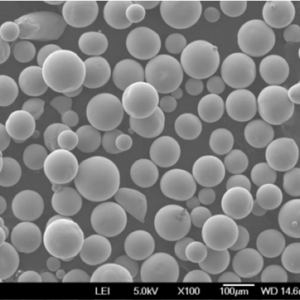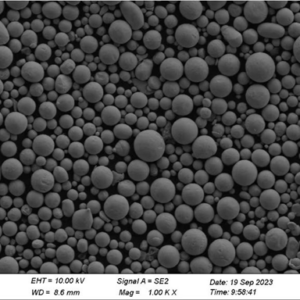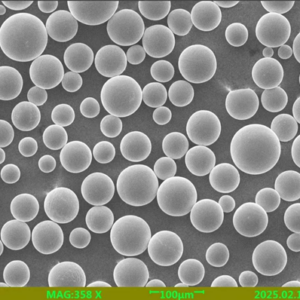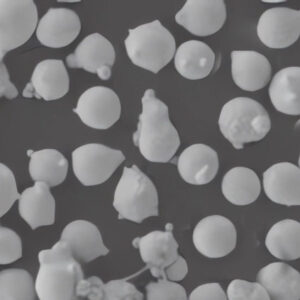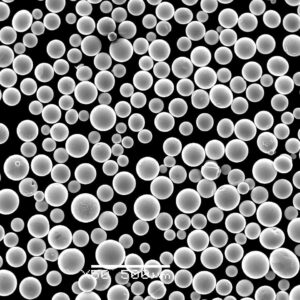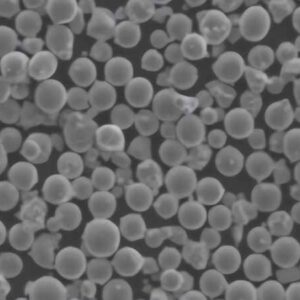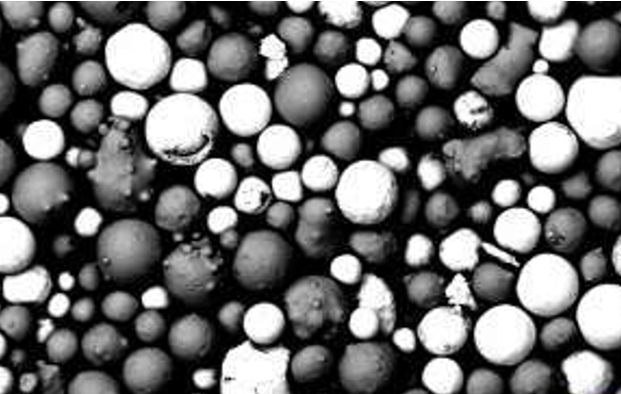The world of metal 3D printing, also known as Additive Manufacturing (AM), is revolutionizing prototyping and production across various industries. At the heart of this revolution lies a crucial ingredient: metal powder. But with a vast array of metal powders available, choosing the right one can be daunting. Today, we’ll delve into the world of Al 3203 powder, a versatile and high-performing option for your 3D printing needs.
Understanding Metal Powders
Imagine a metallic version of your inkjet printer, meticulously building objects layer by layer. That’s the essence of metal 3D printing. But instead of ink, it utilizes metal powder particles that get fused together using various techniques like laser melting or electron beam melting. The choice of metal powder significantly impacts the final product’s properties, printability, and applications.
Here’s a breakdown of some commonly used metal powders for 3D printing, along with their unique characteristics:
- Aluminum Powders:
- AlSi10Mg (AA6061): This widely used aluminum alloy offers excellent printability, good corrosion resistance, and a balance of strength and ductility. Think of it as the “aluminum workhorse” for applications like automotive components, housings, and prototypes.
- AlSi7Mg0.3 (AA7075): Known for its high strength-to-weight ratio, this aluminum alloy is ideal for demanding applications like aerospace components and high-performance parts. Imagine crafting lightweight yet exceptionally sturdy aircraft parts with this powder.
- Al 3203: We’ll explore this powder in detail throughout this article.
- Titanium Powders:
- CP Ti (Commercially Pure Titanium): This biocompatible grade offers excellent corrosion resistance and is perfect for medical implants and prosthetics. Think of giving patients a second chance at mobility with this powder.
- Ti6Al4V (Grade 5): An industry workhorse, this titanium alloy boasts high strength, good fatigue resistance, and biocompatibility. Imagine crafting strong yet lightweight parts for aerospace, medical, and sporting goods applications.
- Steel Powders:
- 17-4 PH Stainless Steel: Offering a good balance of strength, corrosion resistance, and some degree of hardenability, this steel is versatile for various applications, from medical instruments to tooling components.
- 316L Stainless Steel: One of the most popular stainless steel grades, it provides excellent corrosion resistance, making it ideal for applications requiring resistance to harsh environments, like chemical processing equipment and marine components.
- Nickel-based Powders:
- Inconel 625: This high-performance alloy offers exceptional resistance to heat, corrosion, and oxidation. Imagine creating parts that can withstand extreme temperatures, perfect for applications like jet engines and gas turbines.
This list just scratches the surface of the diverse metal powder landscape. Each powder offers a unique combination of properties, catering to specific application requirements.

Precise Composition of Al 3203 Powder
Al 3203 powder belongs to the aluminum-copper-magnesium (Al-Cu-Mg) alloy family. Its magic lies in the specific blend of these elements:
| Element | Weight % | Role |
|---|---|---|
| Aluminum (Al) | Balance | The primary element, forming the lightweight and strong foundation of the alloy. |
| Copper (Cu) | 0.2 – 0.5 | Enhances strength and hardness compared to pure aluminum. Imagine adding a dash of copper to create a more robust aluminum structure. |
| Magnesium (Mg) | 0.3 – 0.5 | Improves weldability and corrosion resistance. Think of magnesium as the secret ingredient that makes Al 3203 powder easier to work with and more resistant to rust. |
This precise composition yields a material known for its:
- Excellent Strength and Fatigue Resistance: Al 3203 powder offers superior strength compared to pure aluminum, making it suitable for structural components experiencing repeated stress. Imagine creating a lightweight yet robust bracket that can withstand constant vibrations.
- Enhanced Weldability: The presence of magnesium improves the powder’s weldability, crucial for creating strong bonds between deposited layers during the 3D printing process. Think of seamlessly fusing layers together to build a solid and reliable final product.
- Good Corrosion Resistance: While not as corrosion-resistant as some stainless steel powders, Al 3203 offers decent resistance to environmental factors, making it suitable for various applications.
Beyond the Basics: Trace Elements and Their Impact
While the primary elements (aluminum, copper, and magnesium) form the core of Al 3203 powder, trace elements can also play a significant role:
- Iron (Fe): Typically present in small quantities (less than 0.5%), iron can slightly improve strength but may also affect corrosion resistance. Imagine a small amount of iron acting like a microscopic reinforcement within the aluminum matrix.
- Silicon (Si): Similarly present in trace amounts (less than 0.2%), silicon can influence fluidity during the 3D printing process. Think of silicon as a lubricant on a microscopic level, aiding the smooth flow of powder particles.
- Manganese (Mn): Found in even smaller quantities (less than 0.1%), manganese helps improve hot cracking resistance during the printing process. Imagine manganese acting like a tiny firefighter, preventing cracks from forming as the material cools.
Understanding the impact of these trace elements requires considering the specific application and desired properties. Consulting a material science expert or the powder manufacturer can provide valuable insights for optimizing your 3D printing process.
Applications: Where Al 3203 Powder Shines
Al 3203 powder’s unique blend of properties makes it a versatile choice for various applications across different industries:
| Industry | Application Examples | Key Considerations |
|---|---|---|
| Automotive: | Lightweight brackets, structural components, prototype parts | Strength, weight reduction, printability |
| Aerospace: | Interior components, non-critical structural parts | Strength, weight reduction, printability (Note: For flight-critical components, other aluminum alloys with superior mechanical properties might be tercih edilmesi (preferred) |
| Consumer Electronics: | Heatsinks, housings, enclosures | Good thermal conductivity, printability, aesthetics (depending on post-processing) |
| Industrial Machinery: | Jigs, fixtures, tooling components | Strength, wear resistance, printability |
| Medical & Healthcare: | Prosthetics (non-load bearing), medical devices (limited use) | Biocompatibility (consult regulations), printability, corrosion resistance |
Important Note: While Al 3203 offers some level of biocompatibility, it’s crucial to adhere to relevant regulations and consult with medical professionals for applications in the medical and healthcare field. For load-bearing prosthetics, other materials with superior mechanical properties might be necessary.
Diving Deeper: Specifications, Sizes, and Grades
When choosing Al 3203 powder, several factors come into play:
| Property | Description |
|---|---|
| Particle Size Distribution: Measured in micrometers (µm), particle size significantly impacts printability, surface finish, and mechanical properties. Finer powders generally offer better resolution and smoother surfaces but may be less flowable. | Choosing the right particle size distribution depends on your 3D printer’s capabilities and desired outcome. A balance between resolution and printability is often sought. |
| Apparent Density: This refers to the weight of powder per unit volume in a loose, uncompacted state. It influences powder handling and storage requirements. | A higher apparent density can indicate easier flowability during printing. |
| Flowability: This characteristic determines how easily the powder flows, affecting its suitability for specific 3D printing processes. Good flowability ensures consistent layer formation. | Powders with poor flowability can lead to printing inconsistencies. |
| Sphericity: The shape of the powder particles can influence packing density and flowability. More spherical particles typically flow better. | Spherical particles can contribute to a more uniform printing process. |
Here’s a table summarizing some common specifications for Al 3203 powder:
| Property | Typical Values |
|---|---|
| Particle Size Distribution (D50) | 15-45 µm |
| Apparent Density | 2.3 – 2.7 g/cm³ |
| Flowability | >20 s/50g (measured by Hall Flowmeter) |
| Sphericity | >0.90 |
Additionally, Al 3203 powder can be available in various grades, depending on the manufacturer’s specific offerings. These grades might involve tighter control over specific properties or additional certifications for certain applications.
Remember, consulting the powder manufacturer’s technical data sheet (TDS) is essential for obtaining the most up-to-date and precise specifications.
Suppliers and Pricing: Finding the Right Fit
Al 3203 powder is readily available from various reputable metal powder suppliers worldwide. Here are some factors to consider when choosing a supplier:
- Reputation and Experience: Look for established suppliers with a proven track record in supplying high-quality metal powders. Positive customer reviews and industry recognition can be strong indicators.
- Product Consistency: Consistent particle size distribution, flowability, and chemical composition are crucial for achieving repeatable printing results. Reliable suppliers prioritize stringent quality control measures.
- Technical Support: Having access to knowledgeable technical support can be invaluable for troubleshooting printing issues and optimizing your process.
- Pricing and Minimum Order Quantity (MOQ): Metal powder prices can vary depending on the supplier, order quantity, and market conditions. Compare quotes from multiple suppliers while considering the MOQ, as some suppliers may have minimum order requirements.
- Certifications: For specific applications, certifications like AS9100 (aerospace) or ISO 13485 (medical devices) might be necessary. Ensure the supplier offers powders with the required certifications.
Here’s a table listing some potential suppliers of Al 3203 powder (Please note that this is not an exhaustive list and inclusion does not constitute endorsement):
| Supplier | Location | Website |
|---|---|---|
| AMPG | USA | https://iamg.ltd/about |
| Höganäs | Sweden | https://www.hoganas.com/en/ |
| AP Powder | United Kingdom | https://www.micropowders.com/product-finder.html&application=personal-care&subapplication=ap-do |
| SLM Solutions | Germany | https://nikon-slm-solutions.com/ |
| EOS GmbH | Germany | https://www.eos.info/ |
Pricing for Al 3203 powder can vary depending on the factors mentioned above. As a general guideline, expect prices to be in the range of \$30- \$50 per kilogram. However, contacting suppliers directly for current quotes is always recommended.
the Benefits of Al 3203 Powder
Every material has its strengths and weaknesses. Here’s a balanced view of Al 3203 powder:
Pros:
- Excellent Strength and Fatigue Resistance: Compared to pure aluminum, Al 3203 offers superior mechanical properties, making it suitable for various structural applications.
- Enhanced Weldability: The presence of magnesium improves the powder’s weldability, leading to stronger bonds between printed layers.
- Good Corrosion Resistance: While not the most corrosion-resistant metal powder, Al 3203 offers adequate protection for many applications.
- Wide Availability: Al 3203 is a popular choice, making it readily available from numerous suppliers.
- Cost-Effective: Compared to some other high-performance metal powders, Al 3203 is generally more affordable.
Cons:
- Lower Strength than some Aluminum Alloys: For applications demanding the absolute highest strength, other aluminum alloys like AlSi7Mg0.3 might be a better choice.
- Not ideal for Highly Corrosive Environments: For applications in constant contact with harsh chemicals or saltwater, other corrosion-resistant materials might be necessary.
- Limited Biocompatibility: While possessing some biocompatible properties, Al 3203 might not be suitable for all medical implants. Consult regulations and medical professionals for specific applications.
Ultimately, the decision of whether Al 3203 powder is the right choice for your project depends on your specific requirements and priorities. Carefully weigh the pros and cons considering the application’s strength, corrosion resistance, and biocompatibility needs.
Manufacturing Process of Al 3203 Powder
The journey of Al 3203 powder from raw materials to its role in 3D printing magic involves a fascinating process:
- Starting Materials: The process begins with high-purity aluminum, copper, and magnesium.
- Atomization: Using various techniques like gas atomization or water atomization, the molten metal is broken down into tiny droplets that rapidly solidify into spherical or near-spherical powder particles.
- Sieving and Classification: The raw powder is then sieved to achieve the desired particle size distribution. This ensures consistent flowability and printability.
- Blending and Post-Processing: In some cases, additional elements might be blended with the powder for specific properties. Degasification processes might be employed to remove any trapped gases within the powder particles.
- Quality Control: Rigorous quality control checks are performed throughout the manufacturing process to ensure the powder meets the required specifications for chemical composition, particle size distribution, flowability, and other critical properties.
Understanding the manufacturing process provides valuable insight into the properties of Al 3203 powder. For instance, the atomization technique can influence the particle size and morphology, impacting flowability and printability.

FAQs
| Question | Answer |
|---|---|
| What are the typical applications of Al 3203 powder? | Al 3203 powder finds use in various industries, including automotive (lightweight brackets, structural components), aerospace (interior components, non-critical structural parts), consumer electronics (heatsinks, housings), industrial machinery (jigs, fixtures), and medical & healthcare (limited use in prosthetics and medical devices). |
| How does Al 3203 powder compare to other aluminum alloys for 3D printing? | Compared to pure aluminum, Al 3203 offers superior strength and fatigue resistance. However, for applications demanding the absolute highest strength, AlSi7Mg0.3 might be a better choice. Al 3203 offers good, but not exceptional, corrosion resistance. For highly corrosive environments, other materials might be necessary. |
| Is Al 3203 powder biocompatible? | Al 3203 possesses some level of biocompatibility. However, for implantable medical devices, strict regulations apply. Consulting with medical professionals and adhering to relevant regulations is crucial. For load-bearing prosthetics, other materials with superior mechanical properties might be required. |
| What factors should I consider when choosing a supplier for Al 3203 powder? | Reputation, experience, product consistency, technical support, pricing, minimum order quantity, and certifications are all essential factors to consider. |
| How much does Al 3203 powder cost? | Pricing can vary depending on the supplier, order quantity, and market conditions. Generally, expect a range of \$30- \$50 per kilogram. Contacting suppliers directly for current quotes is recommended. |
| What are the safety precautions when handling Al 3203 powder? | Al 3203 powder can be irritating to the skin and lungs. Proper personal protective equipment (PPE) like gloves, safety glasses, and a respirator are recommended when handling the powder. Always follow the safety data sheet (SDS) provided by the manufacturer. |
By understanding these FAQs, you can make informed decisions about using Al 3203 powder in your 3D printing projects.
Conclusion
Al 3203 powder stands out as a reliable and versatile option for metal additive manufacturing. Its well-balanced combination of strength, weldability, corrosion resistance, affordability, and wide availability makes it a popular choice across various industries. From lightweight automotive components to functional prototypes, Al 3203 powder empowers the creation of innovative and functional metal parts through 3D printing.
As the world of metal 3D printing continues to evolve, Al 3203 powder is certain to remain a key player, offering a powerful tool for engineers, designers, and manufacturers to bring their creations to life.


